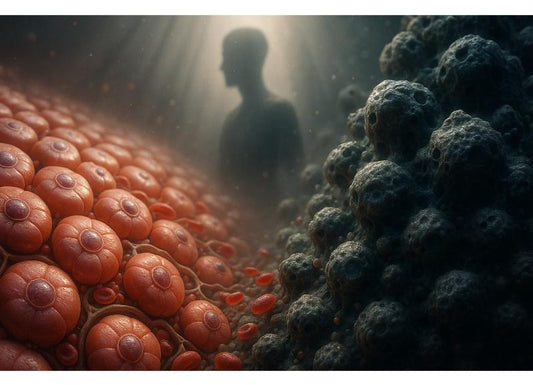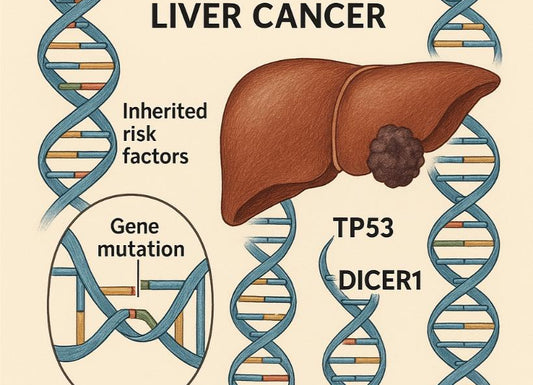Understanding Renal Cysts: Types, Symptoms, and When to Worry
 Written By
Blen Shumiye, MD
Written By
Blen Shumiye, MD

Hearing that you have a renal cyst can sound concerning, but most of the time, it’s not something to panic about. Renal cysts also called kidney cysts are fluid-filled sacs that form within or on the surface of the kidneys. They are quite common, especially as people age, and in most cases, they are harmless.
Still, some cysts can be linked to underlying kidney conditions, so it’s important to understand what they mean, how they’re diagnosed, and when treatment may be necessary.
What Is a Renal Cyst?
A renal cyst is a small, round sac filled with clear fluid that develops on or inside the kidney. Most cysts are simple cysts, which are benign (noncancerous) and do not interfere with kidney function.
In contrast, complex cysts may contain irregular walls, solid areas, or calcium deposits and sometimes require further testing to rule out more serious conditions.
If you’re curious about how kidney function is monitored, read our guide on At-Home Kidney Function Tests for an overview of modern diagnostic options.
Types of Renal Cysts
1. Simple Renal Cysts
These are the most common type. They usually develop as part of the normal aging process. Simple cysts rarely cause symptoms or complications and are often discovered incidentally during imaging tests for other reasons.
2. Complex Renal Cysts
These have thicker walls, septations (dividing walls), or internal echoes. Doctors often use the Bosniak classification system to categorize complex cysts based on imaging features and determine whether monitoring or removal is needed.
|
Bosniak Category |
Description |
Typical Management |
|
I–II |
Simple or minimally complex, almost always benign |
No follow-up or routine imaging |
|
IIF |
Minimally complex but uncertain; small chance of malignancy |
Repeat imaging every 6–12 months, then annually for 2–5 years |
|
III |
Indeterminate cystic mass; significant malignancy risk (40–60%) |
Surgical evaluation or biopsy |
|
IV |
Cystic mass with clear malignant features |
Surgical removal |
3. Polycystic Kidney Disease (PKD)
Unlike simple cysts, PKD is a genetic disorder that causes multiple cysts to grow in both kidneys. Over time, these cysts can enlarge the kidneys and impair function.
The most common form, autosomal dominant PKD (ADPKD), usually appears in adulthood. Treatment focuses on controlling blood pressure, maintaining kidney health, and slowing disease progression. For some adults with rapidly progressing ADPKD, a medication called tolvaptan can help reduce cyst growth, though it requires specialist monitoring for potential liver side effects.
What Causes Renal Cysts?
The exact cause of simple renal cysts isn’t fully understood, but they may develop when microscopic tubules in the kidney become blocked, causing fluid to collect.
Risk factors include:
-
Aging (most common in people over 50)
-
Male sex (men are slightly more prone)
-
High blood pressure
-
Chronic kidney disease
-
Genetic conditions like PKD
Symptoms

Most renal cysts don’t cause symptoms and are found during imaging tests such as ultrasound, CT, or MRI.
However, when symptoms do occur, they may include:
-
Dull pain or pressure in the back, side, or upper abdomen
-
Blood in the urine (hematuria)
-
Increased urination or urinary tract infections
-
High blood pressure (in rare cases)
If a cyst becomes large or infected, symptoms may include:
-
Sharp flank pain
-
Fever and chills
-
Nausea or vomiting
Seek medical attention if these symptoms develop, as they may indicate infection, rupture, or obstruction. Also if you are concerned about urinary infections, explore UTI Tests: The Essential Guide to learn how home testing can help catch infections early.
How Renal Cysts Are Diagnosed
Renal cysts are usually detected through imaging studies:
-
Ultrasound: Often the first test to identify cysts and assess their size and structure.
-
CT Scan or MRI: Provides detailed images to distinguish simple from complex cysts.
-
Blood and Urine Tests: Evaluate kidney function and check for signs of infection or bleeding.
Doctors may repeat imaging periodically to ensure that the cyst isn’t growing or changing in appearance.
Treatment Options
Simple Cysts
Most simple cysts do not need treatment. If they cause discomfort, grow large, or interfere with kidney function, your doctor may:
-
Drain the cyst with a needle under ultrasound guidance (aspiration)
-
Inject a sclerosing agent to prevent recurrence
-
Perform laparoscopic surgery to remove the cyst if necessary
Complex Cysts
If imaging shows irregular or suspicious features, your doctor may recommend closer monitoring or surgical removal. Rarely, a biopsy may be needed to rule out cancer.
Polycystic Kidney Disease (PKD)
While there’s no cure for PKD, treatment focuses on slowing cyst growth and protecting kidney function.
-
Blood pressure control is crucial because ACE inhibitors or ARBs help protect the kidneys.
-
Tolvaptan (Jynarque) is the only FDA-approved drug that can slow cyst growth in adults with rapidly progressing PKD. It requires regular liver monitoring and specialist supervision.
-
Pain management may involve acetaminophen, cyst drainage, or minimally invasive surgery for large or infected cysts.
-
Lifestyle measures staying hydrated, limiting salt and caffeine, avoiding smoking, and maintaining a healthy diet support kidney health.
-
In advanced cases, dialysis or kidney transplantation may become necessary.
Lifestyle and Home Care

For people with simple renal cysts, no specific treatment or dietary changes are typically required. However, supporting your overall kidney health is always beneficial.
Tips for kidney health:
-
Stay hydrated with plenty of water (unless otherwise advised)
-
Limit salt and processed foods to maintain healthy blood pressure
-
Avoid excessive use of painkillers like NSAIDs
-
Eat a balanced diet rich in fruits, vegetables, and whole grains
-
Get regular checkups to monitor kidney function
You can also take proactive steps with at-home tools such as the Ribbon Checkup Urine Test to monitor your kidney’s well-being.
When to See a Doctor

Contact your healthcare provider if you experience:
-
Persistent or severe flank pain
-
Blood in your urine
-
Fever, chills, or signs of infection
-
Unexplained high blood pressure
These may be signs that a cyst is causing complications or that another kidney issue needs attention.
Outlook
Most renal cysts are harmless and never cause symptoms or complications. For those that do, treatments are usually simple and effective.
However, regular monitoring is important, especially if you have multiple or complex cysts. Early detection and follow-up care can prevent future kidney problems and ensure long-term kidney health.
The Bottom Line
Renal cysts are common and usually benign, but they should still be evaluated by a healthcare provider to rule out more serious causes. Maintaining healthy habits and keeping up with regular kidney checkups can help you stay ahead of any potential issues.
Your kidneys do a lot for you, protecting them with care and awareness goes a long way.
Want to Check Your Kidney Health at Home?
You can take an at-home kidney function test through Ribbon Checkup and get results within days.
Related Resources
References
Kidney Cysts. (2025). Medlineplus.gov; National Library of Medicine. https://medlineplus.gov/kidneycysts.html
Kidney cysts - Symptoms and causes. (2025). Mayo Clinic; https://www.mayoclinic.org/diseases-conditions/kidney-cysts/symptoms-causes/syc-20374134
Kidney Cysts: Causes, Symptoms, Treatment & Prevention. (2017, March 7). Cleveland Clinic. https://my.clevelandclinic.org/health/diseases/14884-kidney-cysts
Lee, J., & Darcy, M. (2011). Renal Cysts and Urinomas. Seminars in Interventional Radiology, 28(04), 380–391. https://doi.org/10.1055/s-0031-1296080
Simms, R. J., & Ong, M. (2014). How simple are “simple renal cysts”?. Nephrology Dialysis Transplantation, 29(suppl 4), iv106–iv112. https://doi.org/10.1093/ndt/gfu106

Dr. Blen is a seasoned medical writer and General Practitioner with over five years of clinical experience. She blends deep medical expertise with a gift for clear, compassionate communication to create evidence-based content that informs and empowers. Her work spans clinical research, patient education, and health journalism, establishing her as a trusted voice in both professional and public health spheres.



